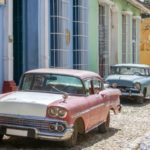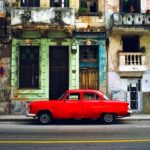Have you ever wondered why every view of a Havana street looks like it is straight out of the 1950s?
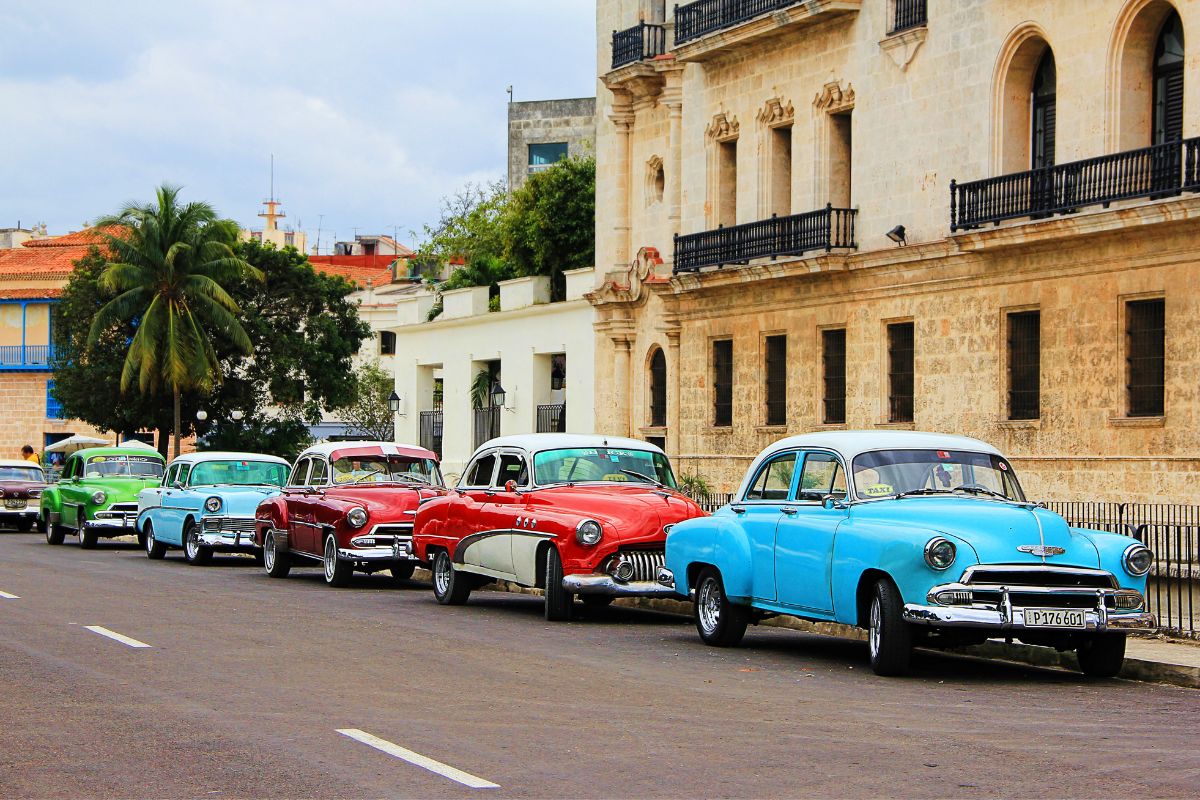
All those amazing classic cars are still being driven around and used every day as if it were the most natural thing in the world.
Well in Cuba it is. The colorful automobiles are actually the last cars that were imported into Cuba from the United States before the revolution.
But how are they still running, you ask. Well that’s an interesting story.
History Of Cars In Cuba
From the beginning of the 20th century Cuba began to import cars from the United States.
It had no production facilities of its own and America was the closest market for automobiles.
By 1920 Cuba had one of the highest number of cars per capita.
Imports from America made it the largest Latin American importer of US cars with the Ford Model T a common sight on Havana’s streets.
It was jokingly alluded to as a fotingo meaning a jalopy. Nowadays, a car in Cuba that looks slightly rundown is referred to as a fotingo.
In the early 20th century car manufacturers such as Cadillac, Chevrolet, Ford and Chrysler sent cars to Cuba to be track tested.
By 1956, Cuba had over 140,000 automobiles with over 90,000 in the city of Havana alone.
What Happened In 1959?
1959 saw Fidel Castro establish a revolutionary socialist state in Cuba.
With his rise to power old friends quickly became new enemies.
An embargo was imposed on any imports of American goods into Cuba including cars and even car parts.
So now Cubans had no choice but to become mechanics.
They could no longer import cars from the US, so they had to learn how to maintain and repair the cars they had.
The shortage of US made parts meant that alternatives had to be found elsewhere.
Cuba could still import Russian made cars like the Lada, so Cubans resorted to improvising with these parts to keep their cars on the road.
Innovations and creative compromises meant the cars could keep running despite the embargo from America.
Over the years the embargo has been alternatively relaxed and renewed depending on the administration of the time in the United States.
Cuban Ingenuity
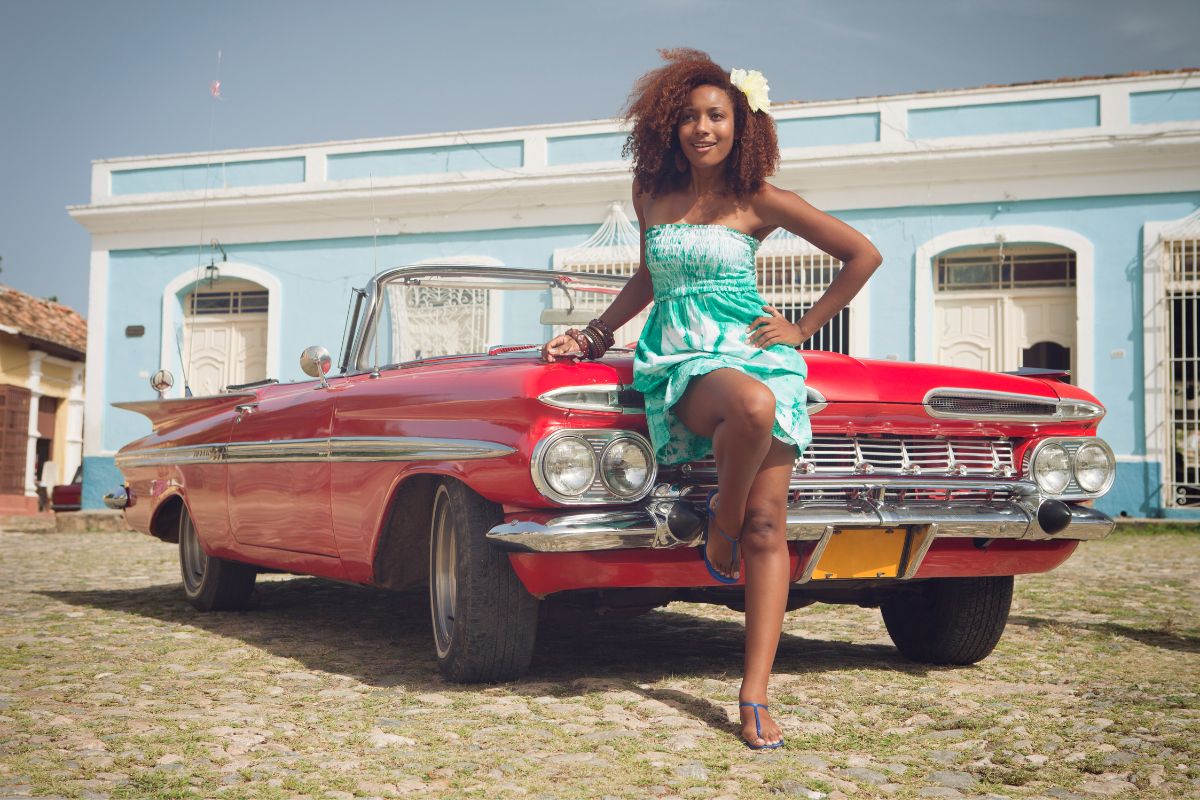
Apart from a few diplomats and doctors who were given permission to buy new cars for which they needed a permit, the majority of Cubans were forced to buy second hand cars already in circulation or to refit existing cars.
So that’s what they did, they became extremely adept at making parts that were not really compatible with their cars work nonetheless.
They didn’t have much choice, the people needed their cars to get to work and to provide for their families.
Often they wouldn’t even have the right tools to carry out the work needed on their cars, but they made do and got the job done.
Repairs to bodywork with mismatched panels were frequently covered up with vibrant paint jobs
The inventiveness of Cubans means that cars that would otherwise have been confined to the scrapheap or sat in someone’s garage as a relic are instead still working and providing Cubans with a means of transportation they otherwise wouldn’t have.
Swapping One Problem For Another
In 2016 the embargo on foreign cars was eased in Cuba by Raul Castro, Fidel Castro’s brother and the country’s new president.
Cubans were now free to purchase brand new cars and could say goodbye to improvising repairs on 60-year-old cars.
But there was a new problem, the price of these cars was way beyond what ordinary Cubans could afford.
Imports of new cars are still tightly regulated, and the state retains a monopoly on car sales in Cuba. This has pushed new cars out of the reach of most Cubans.
A typical example is the Peugeot 508 which retails at around $30,000 in the US but in Cuba costs almost nine times more at around $262,000.
The average wage in Cuba is less than $50 per month.
So most Cubans will be holding on to their classic cars for now and putting their honed mechanic skills to good use for the foreseeable future.
Vintage Car Revival
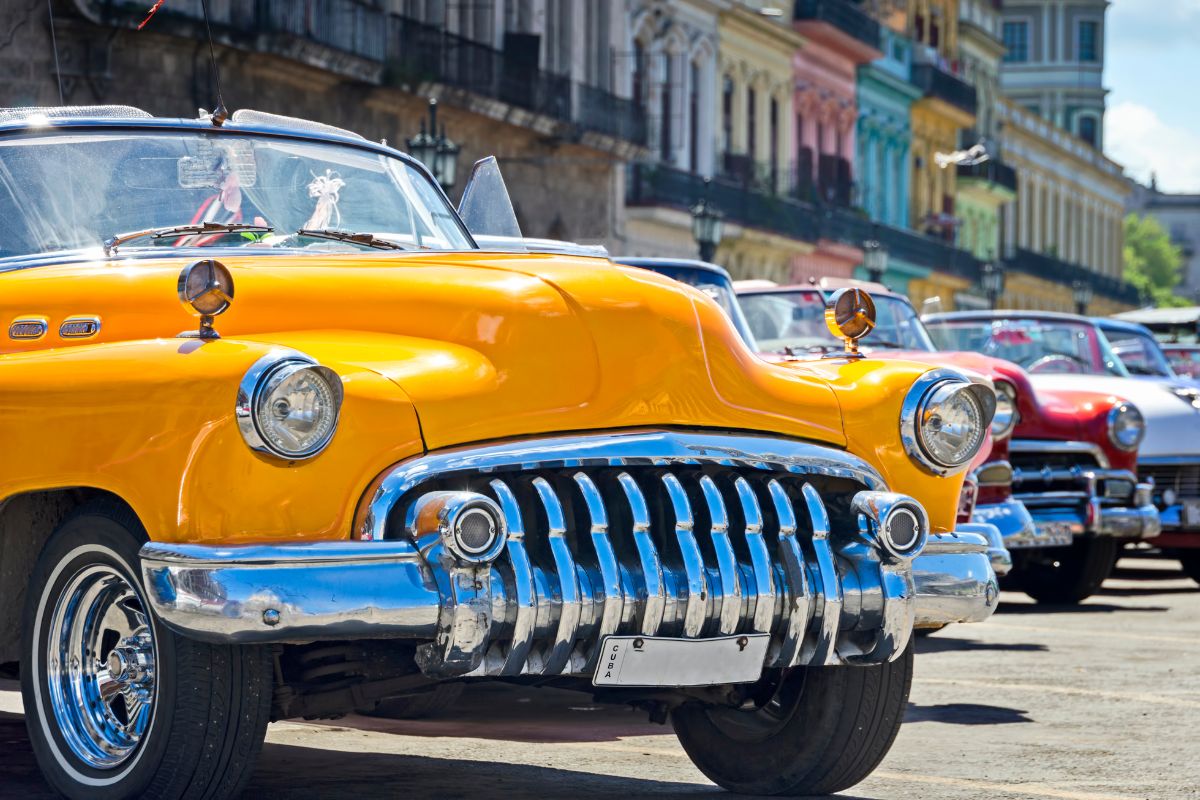
What started out as a necessity and still remains so to a large extent has also become part of the Cuban capital’s identity and culture.
Havana is instantly recognizable in brochures and advertisements from the beautiful, big colorful cars on its streets.
These cars are used as taxis, and for tours around Havana Vieja and Varadero.
Classics like the ‘57 Chevy Bel Air convertible are used to ferry tourists around the island.
Prices are about 25-30 CUC per hour. It is one of the best ways to experience the country, especially the regions of Pinar del Rio where tobacco is grown.
For the last few years it has been possible to hire a classic car and drive yourself around the island, something that was previously prohibited.
However, fully restored classic cars are rare and if you do find one there will be a higher charge than for a standard vintage car.
Riding around Havana in a classic 1950s car will give you the opportunity to see for yourself how the car has been maintained over the years.
Most car owners will be more than happy to tell you all about how they have kept their 60-year-old cars running in Cuba.
What Does The Future Hold?
Looking forward there may be a time when the embargo on US imports to Cuba will be lifted completely and new cars will become affordable.
If that were to happen, what would become of all the classic cars in Cuba?
There are people in the United States who would love to get their hands on a 1950s classic car but as of now the cars are not allowed to leave the island.
If that were to change it is worth remembering that these cars have not been maintained using original parts.
Most classic car collectors would be horrified to find a Russian diesel engine under the hood of an Oldsmobile or Chinese parts fitted in a Buick, but that’s what they are likely to find.
The Cubans weren’t restoring their cars, they were keeping them running any way they could.
Final Thoughts
There is a saying, ‘necessity is the mother of invention’ and this is very true in the story of Cuba and its classic cars.
The country was cut off from imports of new cars, so they found ways to use what they had to keep their existing cars on the road.
The spirit of inventiveness and creativity that sprang from an imposed situation is testament to the strength of the Cuban people and their willingness to overcome adversity.
Out of a difficult situation they have inadvertently but fortuitously created a great tourist attraction that brings income to much needed areas and supports the local economy.
Even if tomorrow they could put away their classic cars and drive modern automobiles, many would probably choose to hold on to their vintage motors as evidence of their drive and determination.
And who can blame them?
- What Is The Largest Island In Cuba? - September 19, 2022
- Havana – Why Is It Cuba’s Most Exciting City? - September 19, 2022
- Cheapest Time To Visit Cuba (Ultimate Guide) - September 19, 2022

